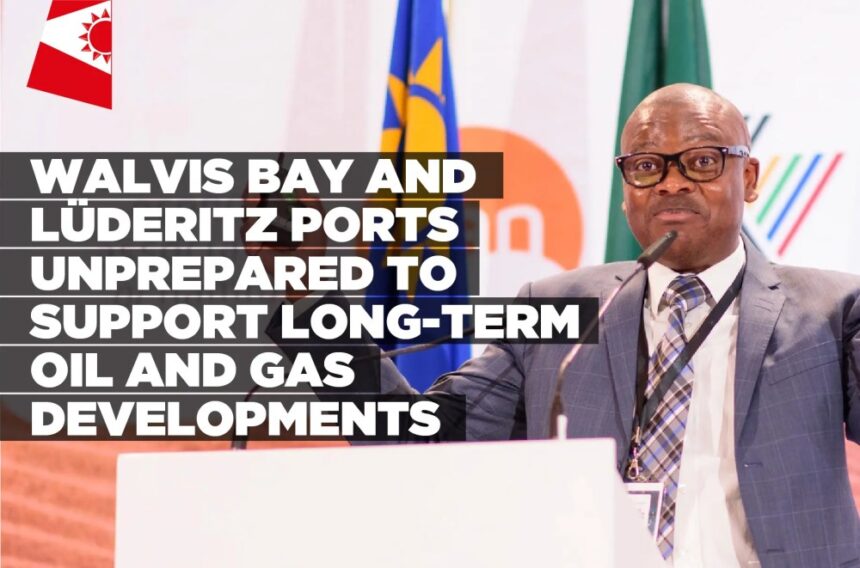Staff Reporter
THE ports of Walvis Bay and Lüderitz lack sufficient capacity to support the development phases of the country’s oil and gas industry in the long term.
This revelation comes from Andrew Kanime, the Chief Executive Officer (CEO) of the Namibian Ports Authority (Namport), who recently addressed the Oil and Gas Conference regarding this predicament. He explained that the two ports have enough capacity to support the exploration and appraisal phases of the oil and gas industry but lack the capacity to support these projects during the development phases.
“If the industry moves to the development phase, there would be a requirement for us obviously to develop new infrastructure there,” he said.
The necessary infrastructure includes, but is not limited to, land of more than 5 hectares (ha), berth depths ranging from 5 meters (m) to 8m, and quayside capacity for berthing Platform Supply Vessels (PSVs) and Offshore Support Vessels (OSVs). One PSV – which is a vessel that transfers required supplies to oil fields – would require a berth length of about 110m, according to Kanime.
“The magnitude of the development in the industry, would actually determine the actual berth length that we would require. You can imagine if we got maybe four operators and if all of them move to development, you’ll need dedicated berthing space for all these PSVs and OSVs. So 110m is for one,” he explained.
According to Kanime, the Port of Walvis Bay might actually be able to support the oil and gas developments for a period of less than five years. This is because Walvis Bay’s North Port has enough space for servicing PSVs, three berths, a water depth of up to 11m, and about 8 ha of land for a supply base.
On the other hand, the Port of Lüderitz, which is much closer to oil fields compared to Walvis Bay, isn’t even prepared to support the oil and gas development phases in the short term.
“As far as the development phase is concerned, we are saying that the Port of Lüderitz is completely a no-go, but with further investment it might still be possible for us to ensure that it might play a role in the development phase,” Kanime explained.
He disclosed that this is because the Port of Lüderitz’s land and berths are restricted: the 25 ha are entirely leased out, the berths are fully utilized, and the port cannot be physically expanded due to the rock on which it is constructed and the encompassing town. Furthermore, he added that the maximum depth alongside the Port of Lüderitz is only 8.75 m, and deepening it wouldn’t be cost-effective due to the bedrock.
“Medium-term, especially to appropriately support the exploration and appraisal phase, we are saying, there is absolutely a need to extend the current quay wall of the Port of Lüderitz. We need to extend the quay wall by at least 200m to 300m and we expect that construction to commence next year,” he added.
Should the construction of the quay wall start next year, Kanime explained, it should be operational within a span of two to three years. He mentioned that this would enable the port to enhance its capacity to support drilling activities for the development phase.
However, in the long term, a completely new port will be established in the adjacent bay of the Port of Lüderitz, named Angra Point. Kanime emphasized that all these projects would necessitate partnerships with the private sector.



Leave a Reply